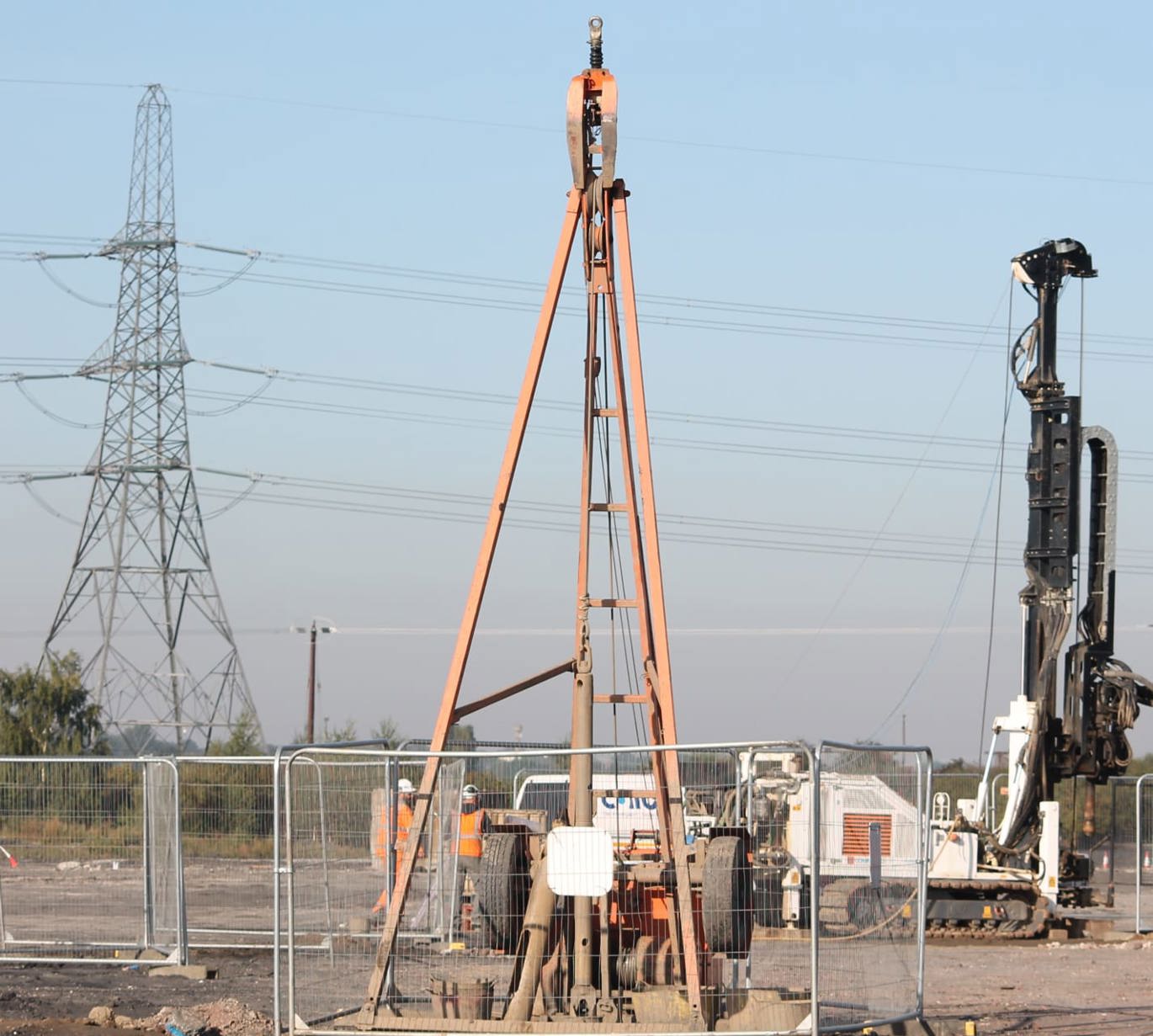Details
The ground investigation was required to establish the geology and geotechnical parameters at the site of a proposed new Energy from Waste centre. The ground investigations comprised the formation of 8 No. cable percussive boreholes formed to rockhead; 4 No. rotary boreholes open holed to rock head and extended using the sophisticated Geobore S wireline drilling system with water flush to 35m depth. Further intrusive works comprised 11No. Static Cone Penetration Testing (CPTu) to 20m depth or refusal and 21No. trial pits and 4No. trial trenches.
A suite of insitu testing was carried out at the site comprising 7 specialised Plate Bearing Tests.

Challenges
The works were carried out at the disused Kellingley colliery site which was extremely contaminated from the legacy of coal mining activities. The site was cleared of most of the former colliery buildings, plant, conveyors and stockpiles. However, there was still smaller stockpiles of coal fines and spoil scattered throughout the site. Hardstanding reinforced concrete was reported to be present at shallow depths below ground level across the majority of the proposed Energy from Waste Plant.
Made Ground was found to a depth of up to 5mbgl and comprised of heavily and grossly contaminated colliery spoil; to prevent downward migration of these contaminants aquifer protection measures were applied to all intrusive works going beyond the Madeground / Natural ground interface.
There was heavily rutted areas across the site necessitating tracked plant and overhead power cables were also present above the site to the southwest.
Outcome
The ground investigation phase of the site works were successfully completed on time and to budget and to the Clients’ and his representative’ satisfaction. All samples recovered were logged by an Engineering Geologist prior to transportation to the laboratories for geotechnical testing and contamination analysis.
The geology and ground conditions were positively established as Madeground to between 3 and 5 m overlying Glacial Deposits comprising Sands and Gravels and laminated clays. Rock was established Mercia Mudstone of the Roxby Formation over Magnesian Limestone.
Geotechnical parameters of the site were established through a combination of in situ testing and laboratory geotechnical testing. A suite of geotechnical and contamination testing on samples obtained from the fieldworks was completed within Concepts in house geotechnical laboratory and by ALS respectively. All the sample data, borehole data and testing schedules were managed and transferred digitally. All subsequent monitoring results, testing results and the factual report were delivered in digital format using AGS 4.
Feedback
"I wish to compliment you on your efforts for the fieldworks. You did an excellent job."
Darren Casey
Project Engineer | Geotechnical Engineer, Arup
Location
Kellingley Colliery, Knottingley, West Yorkshire
Designer/Consultant
Arup
Client
Peel Environmental